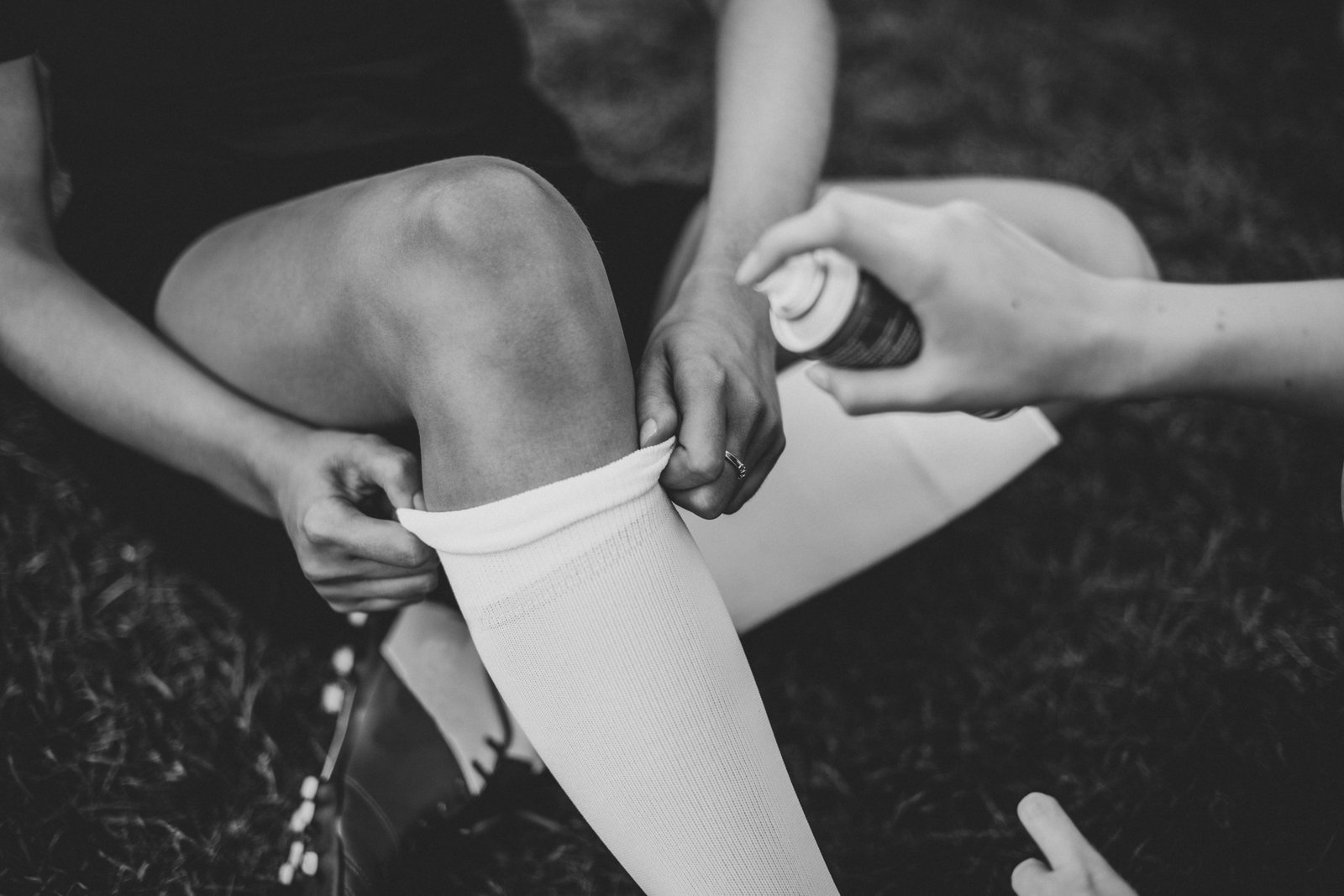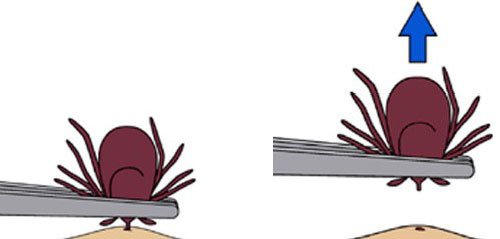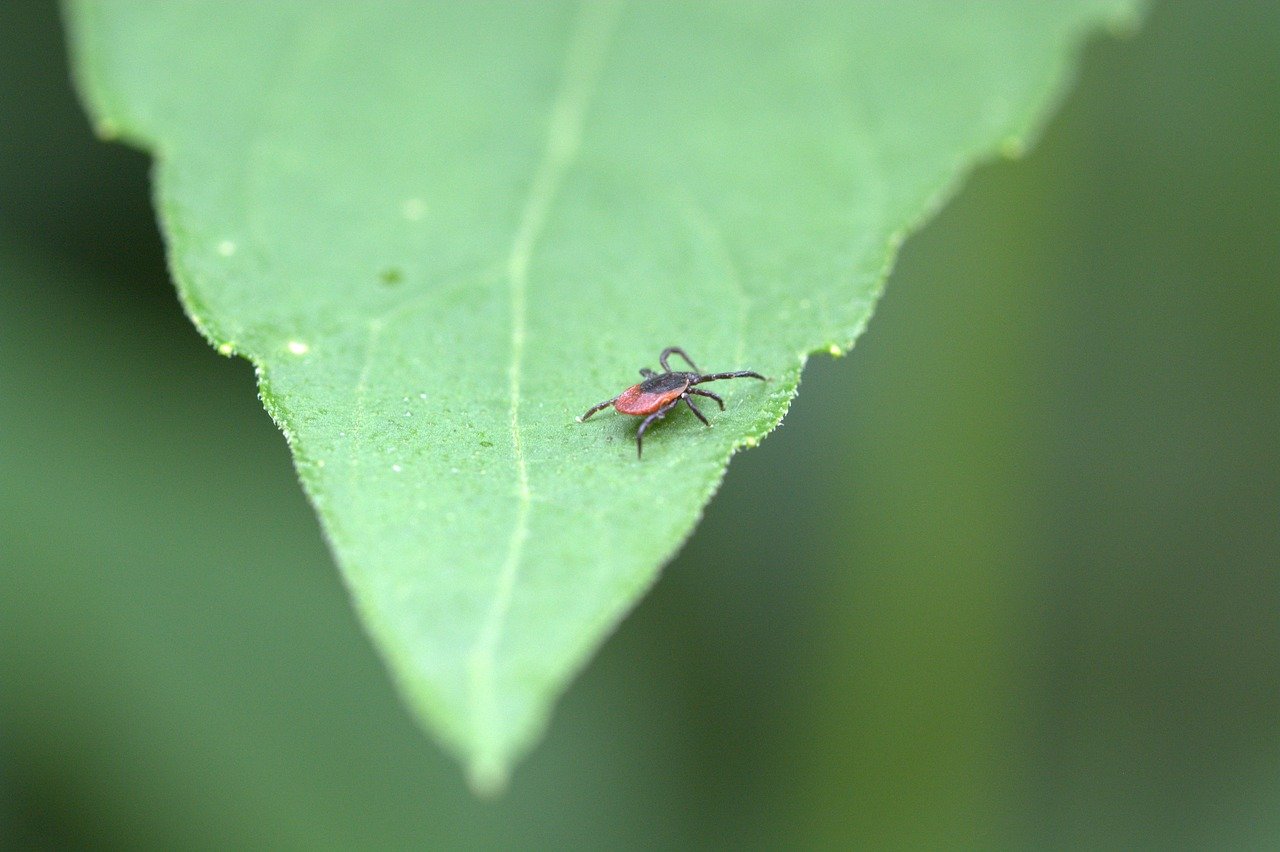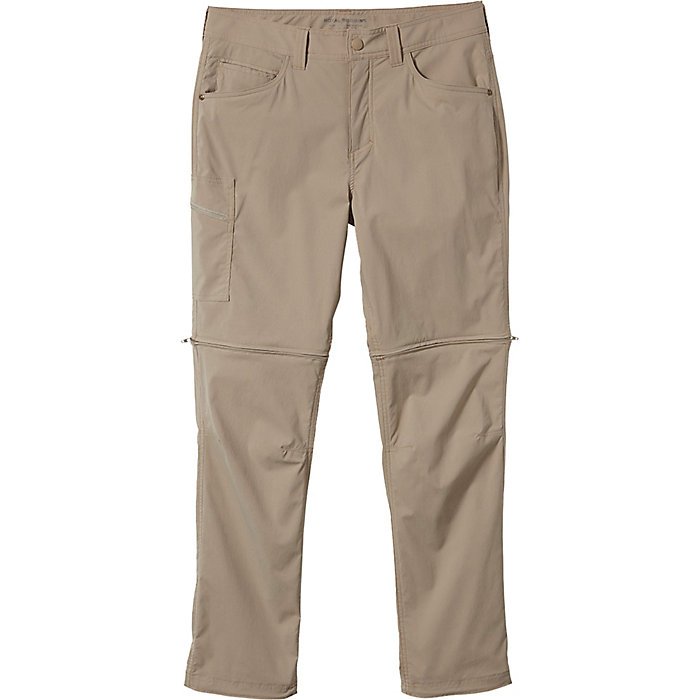 Tick season is in full force in Alberta and other parts of Canada and the USA. The highest concentration of ticks in Alberta is seen throughout spring and early summer, but the threat of Lyme disease will continue well into the autumn, when temperatures begin to drop. Ticks are known to live in forested areas in Canada, but they are also becoming more and more common in city parks and even backyards. Yuck!
Tick season is in full force in Alberta and other parts of Canada and the USA. The highest concentration of ticks in Alberta is seen throughout spring and early summer, but the threat of Lyme disease will continue well into the autumn, when temperatures begin to drop. Ticks are known to live in forested areas in Canada, but they are also becoming more and more common in city parks and even backyards. Yuck!
However, this doesn’t mean you need to hibernate indoors all summer. There are important prevention steps you can take to prevent yourself from getting bitten by a tick, and it’s important to know what to do if you do get bitten. Continue reading this article to learn the answers to the questions:
- What exactly are ticks?
- Where do ticks live?
- What is Lyme disease? What types of ticks cause Lyme disease?
- What are the Lyme disease statistics in Canada?
- What are the Lyme disease statistics in Alberta?
- What other diseases can ticks transit?
- What do ticks look like?
- How do ticks bite?
- How do I avoid getting bitten by a tick?
- How do I reduce ticks in my yard?
- How do I remove a tick?
- Where do I submit a tick for testing?
- What products are best for repelling ticks?
 Tick Season in Alberta and Canada
Tick Season in Alberta and Canada
What exactly are ticks?
Ticks are tiny spider-like animals called arachnids. They feed on the blood of humans and other mammals such as dogs, cats, deer, cattle, coyotes and raccoons. They can also feed on birds, reptiles and amphibians.
Where do ticks live in Alberta / Canada?
Ticks in Alberta are mostly found in forests, wooded areas, shrubs, tall grass and leaf piles. You don’t have to go to the mountains to get ticks; they can be found on the prairies and in urban areas such as parks and even backyards. Something as simple as a bird flying overhead could drop a tick anywhere.
Activities most susceptible to ticks are hiking, fishing, camping, golfing and hunting.

Ticks and Lyme disease in Canada
What is Lyme disease?
Lyme disease, also known as Lyme borreliosis, is an infectious inflammatory disease with many varying symptoms. It is the most common tick-borne disease in North America.
In Alberta, the bacteria that causes Lyme disease is transferred primarily by the Blacklegged/Deer Tick. It can affect humans, wildlife and domestic animals. It usually causes infection and, in some cases if left untreated, can cause long-term complications and disability. Early detection is the key, as it can most often be resolved successfully with identification in the early stages with antibiotic treatment.
Ticks that carry Lyme disease are mostly located in six provinces – Ontario, B.C., Manitoba, New Brunswick, Nova Scotia and Quebec. However, there have been cases of Lyme disease reported in Alberta.
Lyme disease symptoms:
- Expanding areas of redness at the site of the tick bite
- Fever
- Headache
- Tiredness
Lyme disease complications:
- Facial nerve paralysis
- Arthritis
- Meningitis
Lyme disease statistics in Canada:
Lyme disease appears to be on the rise overall in Canada (or, at least, the reporting and diagnosis of Lyme disease).
There were 2,025 reported cases of Lyme disease in all of Canada in 2017. This number has more than doubled from the 992 cases reported in 2016.
According to the Government of Canada, the number of Lyme disease cases reported in Canada between 2009 and 2017 were as follows:
- 2009: 144
- 2010: 143
- 2011: 266
- 2012: 338
- 2013: 682
- 2014: 522
- 2015: 917
- 2016: 992
- 2017: 2025
Lyme disease statistics in Alberta:
According to the Government of Alberta, only 100 cases of Lyme disease were reported in Alberta between 1991 and 2017.
Although the threat of Lyme disease transmitted through ticks is low in Alberta, it could be on the increase.
Ticks thrive in hot, dry weather — and that’s exactly what meteorologists are predicting for central and southern Alberta this summer. The more ticks there are, the greater the risk of disease.
Nevertheless, it’s important to protect yourself when you go out, particularly in grassy and wooded areas, and to thoroughly check yourself and your pets when you return from an outing. Learn about how to prevent tick bites and what to do if you are bitten by a tick
What types of ticks cause Lyme disease?
Only black-legged ticks, known as Deer Ticks and Western Black-Legged Ticks (species Ixodes scapularsis and Ixodes pacificus) are known carriers of B. burgdorferi in North America.
In a 2017 study by the Government of Alberta, only about 2% of all ticks they tested were positive for B. burgdorferi, the bacterium that causes Lyme disease. The chances of getting bitten by a tick carrying bacteria that causes Lyme disease in Alberta is slim, but not impossible. However, ticks can also cause other types of disease in humans and animals.
 What other diseases can ticks transmit?
What other diseases can ticks transmit?
Here are some of the other types of diseases besides Lyme disease that ticks in Canada can cause:
Babesiosis
Black-legged ticks can cause this illness with symptoms of fevers, chills, headaches and fatigue. If severe, it can lead to jaundice, anemia and shortness of breath.
Human granulocytic anaplasmosis
Black-legged ticks can cause this disease which attacks the host’s white blood cells. Symptoms are fever, chills, headaches and muscle aches.
Rocky Mountain Spotted Fever
American Dog Ticks or Rocky Mountain Wood Ticks can cause Rocky Mountain Spotted Fever. Symptoms are fever, headache, nausea, and rash.
Powassan
Black-legged ticks can also spread this disease, but it is very rare – only 21 cases have ever been reported in Canada. Sometimes no symptoms are present, other times symptoms are fever, headache, and vomiting. In more extreme cases, inflammation of the brain and meningitis can occur.
What types of ticks live in Alberta?
There are over 11 species of ticks in Alberta, and the most common species are Deer Ticks, Rocky Mountain Wood Ticks, and American Dog Ticks/Wood Ticks.
During hikes in the Rocky Mountains, it can be common to encounter the aptly-named Rocky Mountain Wood Tick.
 What do ticks look like?
What do ticks look like?
Ticks have a flattened oval shape and have leathery brown bodies, without wings or antennae. Young Immature ticks in the larvae stage have only 6 legs. After maturing, they grow two additional legs, for 8 legs total.
Size of Ticks:
The four life stages of a tick are: egg, larva, nymph, and adult. Tick larvae are under 1 mm long (the size of a poppy seed). Nymphs are 1-2 millimeters long (about the the size of a pinhead). Adult ticks can range in size from 2 – 6 millimeters long, and can grow up to 10 millimeters long after they feed. Adult male ticks are usually smaller than adult females.
What does a Rocky Mountain Wood Tick look like?

What does a Deer Tick look like?

What does a Western Black-Legged Tick look like?

Save Huge on Hotels in Canada

How do ticks bite?
Ticks can’t fly or jump, but they can “quest”, which means to wait patiently in position for a suitable host to pass by. They hold onto leaves and grass by their third and fourth pair of legs and when a potential host comes by, they hop on! Once on the host, they look for a place to feed, such as the ear or other areas where the skin is thinner, such as the groin, armpits and scalp.
On dogs, ticks like to feed under the collar, under the tail, inside the groin area, between the toes, under the front legs, and at the elbows. Ticks have also been known to hide on pet’s eyelids (ew!), so be very thorough with your tick checks to make sure you catch and remove them all before they can harm your pet.

Tick and Lyme disease prevention
How do I avoid getting bitten by a tick?
Using common sense and being aware of your surroundings is the best way to protect yourself from ticks. The Government of Alberta recommends the following:
- Walk on cleared trails whenever possible and avoid walking in tall grassy and wooded areas.
- Wear light-coloured clothing and cover up as much as possible by wearing a hat, long-sleeved shirt, and long pants with the legs tucked into socks or boots.
- Use a bug spray that contains the chemical DEET to repel ticks and reapply as frequently as directed.
- Purchase insect repellent clothing, such as Windriver No Fly Zone clothing treated with permethrin
- Check yourself for ticks after leaving a grassy or wooded area. Have someone else check you as well, if this is possible.
- Shower or bathe within two hours of being outdoors to facilitate a prompt tick check and to remove ticks that haven’t attached yet.
- Check your pets for ticks after they’ve been outside. You cannot get Lyme disease from your pet, but your pet can bring infected ticks inside and they can then fall off your pet and attach themselves to you.
- Do a tick check of your outdoor gear. Don’t bring it into the house or car without a quick scan.
- Put dry outdoor clothes in a dryer on high heat for 20 minutes to kill any remaining ticks. If your clothes are damp, additional drying time is needed. If you need to wash your clothes first, hot water is recommended. If the clothes cannot be washed in hot water, tumble dry on low heat for 90 minutes or high heat for 60 minutes.

How do I reduce ticks in my yard?
The Government of Canada recommends the following ways to limit exposure to ticks near your home:
- Mow the lawn regularly to keep the grass short
- Remove leaf litter, brush and weeds at the edge of the lawn and around stonewalls and woodpiles.
- Stack firewood neatly and in a dry area.
- Put barriers to exclude deer around your home and seal stonewalls and small openings to discourage rodent activity.
- Place children’s recreational playground sets, patios and decks away from the yard edges and trees. Place them on a woodchip or mulch foundation and in a sunny location, if possible.
- Treat pets that are commonly exposed to ticks with oral or topic acaricides (as recommended by your veterinarian) as they could carry ticks into the home.
How do I remove a tick?
Removing ticks within 24 to 36 hours can usually prevent infection and it can take between 36 and 48 hours for the Lyme disease bacterium to be transferred.

If a tick is attached to your skin, The Government of Alberta recommends the following ways you can safely remove it:
- Using fine-tipped tweezers, gently grasp its head and mouth parts as close to your skin as possible.
- You can get a special tick puller, the kind that look like a little crowbar, at veterinary clinics and most pharmacies.
- Without squeezing the tick, slowly pull the tick straight up off the skin. Do not jerk or twist it.
- If the head of tick is left in the skin, you should seek medical attention to remove it.
- Once the tick has been removed, clean the bite area with soap and water and disinfect the area with antiseptic. Wash hands with soap and water.
Important Note: Dispose of a live tick by putting it in alcohol, placing it in a sealed bag/container, wrapping it tightly in tape, or flushing it down the toilet.
What not to do if you find a tick:
- Never crush a tick with your fingers; you could burst its abdomen and risk further infection.
- Do not apply matches, cigarettes, petroleum jelly, nail polish, oil or alcohol to the tick. These methods will not induce the tick to pull out; it might even empty its stomach contents into the wound, which would further increase infection.
- Applying heat is a myth. It will only encourage the tick to burrow deeper into the skin. If anything, apply ice to reduce swelling and cause the tick to possibly back out on its own.
Once a tick has been removed:
- Save the tick in a clean, empty container. Do not add any ventilation holes to the container that is being used to put the tick(s) in. You can put more than one tick in the container if they are found on the same person or in the same general area in the environment.
- Add a small piece of tissue or cotton ball, lightly moistened with water, into the container to prevent the tick(s) from drying out.
- Submit the tick for testing as soon as possible.
Where do I submit a tick for testing?
Alberta Provincial Tick Surveillance Program
The Government of Alberta has a Submit-a-tick Program, whereby you can submit a tick for testing as part of a provincial tick surveillance program. They will check to see if the ticks are Blacklegged Ticks and if they are, the ticks will be tested for the Lyme disease bacteria.
You can drop your ticks off at any Alberta Health Services (AHS) Environmental Health Office, but be sure to call ahead to book an appointment. To find an office near you, click here.
If you find a tick on your dog or other warm-blooded pet, you can likely take it to your local veterinary clinic. But again, be sure to call ahead to find out if they are submitting ticks for testing.
Save Huge on Hotels in Canada

Best Products to Repell Ticks
Royal Robbins Women’s Bug Barrier Expedition FZ Hoody
- Super lightweight polyester ripstop wicks moisture, dries quickly, resists wrinkles
- Mesh yoke with TempraTech” body temp activated thermoregulation technology
- Insect Shield repels mosquitoes, ticks and other insects that may carry disease
- Visored hood and scalloped cuffs provide added sun protection
- EPA-Registered insect shield process bindsa proprietary permethrin formula tightly to fabric
- Fibers-resulting in effective, odorless insect protection that lasts the expected lifetime of apparel
- TempraTech provided by HeiQ provides textiles with temperature-activated
- Dynamic moisture wicking properties through a responsive, hydrofunctional polymer that captures and distributes moisture
Royal Robbins Men’s Bug Barrier Active Traveler Zip N Go Pant
- Eco-conscious stretch nylon provides quick-dry performance, durability, breathability
- Insect Shield repels mosquitoes, ticks and other insects that may carry disease
- Fabric has raised interior to prevent sticking to skin
- Hand pockets, drop-in hip pocket, zippered thigh pocket, riveted back pockets
Royal Robbins Men’s Bug Barrier Global Expedition LS
- Super lightweight stretch polyester wicks moisture, dries quickly, resists wrinkles
- Insect Shield repels mosquitoes, ticks and other insects that may carry disease
- Mesh yoke with TempraTech body temp activated thermoregulation technology
- Provides sun protection and breathable comfort in humid climates
- BugsAway insect-repelling fabric wards off ticks, mosquitoes and midges
- Bluesign approved fabric reduces the negative environmental impact of textile production
- Lightweight, abrasion-resistant nylon with added mesh for breathability
- Adjustable peripheral vision hood with drawcord
- Packs into left pocket
- Zipper secure hand pockets
- BugsAway insect-repelling fabric wards off ticks, mosquitoes and midges
- Sun protection with an ultraviolet protection factor (UPF) of 45
- Bluesign approved fabric reduces the negative environmental impact of textile production
- Zippered pocket on right thigh that fits a passport
- Hem cord system for adjustability
- Drawstring waist with zip fly closure
- Front hand pockets, back drop-in pockets
ExOfficio Men’s BugsAway Sandfly Jacket
- BugsAway insect-repelling fabric wards off ticks, mosquitoes and midges
- Lightweight nylon fabric is quick-drying and abrasion-resistant
- Mesh panels for breathability
- Adjustable hood combines sun protection and visibility
- Packs away into left pocket
- Elastic cuffs and hem
- Bluesign approved fabric reduces the negative environmental impact of textile production
Sawyer Products Premium Permethrin Clothing Insect Repellent
- Insect-killing repellent for your clothing is effective against ticks, chiggers, mites and mosquitoes; as effective as 100 percent DEET
- Lasts up to 6 weeks (or 6 washings); will not stain or damage clothing, fabrics, plastics, finished surfaces, or outdoor gear
- 12-ounce capacity treats up to 2 complete outfits; non-aerosol pump bottle; color of bottle may vary. Can be applied to dogs and help control mosquitoes, and fleas for 35 days and against ticks for 6 weeks
- To apply, spray Permethrin directly onto clothing and gear with a slow sweeping motion, keeping the bottle about 6 to 8 inches away and treating each side of the garment for about 30 seconds
Wigwam No Fly Zone Outdoor Midweight Over-The-Calf Sock
- No Fly Zone protects you from biting insects like ticks, flies, and mosquitoes
- Odorless and durable through 70 washes
- Patented Ultimax moisture control from the bottom-up
- Breathable mesh instep
- Foot bottom is made from Repreve, smooth fiber made from recycled plastic bottlesElasticized arch for great fit
- Cushioned
- Seamless toe closure
Outdoor Research Sentinel Brim Hat – Treated for Insect Repellant
The Outdoor Research Sentinel Brim Hat is treated with Insect Shield to help protect against mosquitoes, ticks and other biting insects, including those that can carry disease, and minimize the need for topical repellents that are all smelly, sticky and gross. Almost as gross as the bugs themselves. The Sentinal Brim has a wide, um, brim that is foam stiffened so it “floats” better, and is loaded with features to make it super comfy, lightweight and awesome at managing moisture. Managing moisture sounds like a horrible job.
Disclaimer: There’s a chance that this blog post includes affiliate product links. At absolutely no extra cost to you, I may receive a small commission for any purchase made through these links. Any commissions received are very much appreciated, as they help me to be able to continue posting travel blog content free of charge to my lovely readers. Of course, all recommendations are unbiased, and I will always only recommend products and services that I truly believe in. Thank you for your support!
LOVE IT? PIN IT!

![]()
Questions? Comments? Some other topics you’d like me to cover? I’d love to hear from you, just leave me a comment below!





























leave me a comment